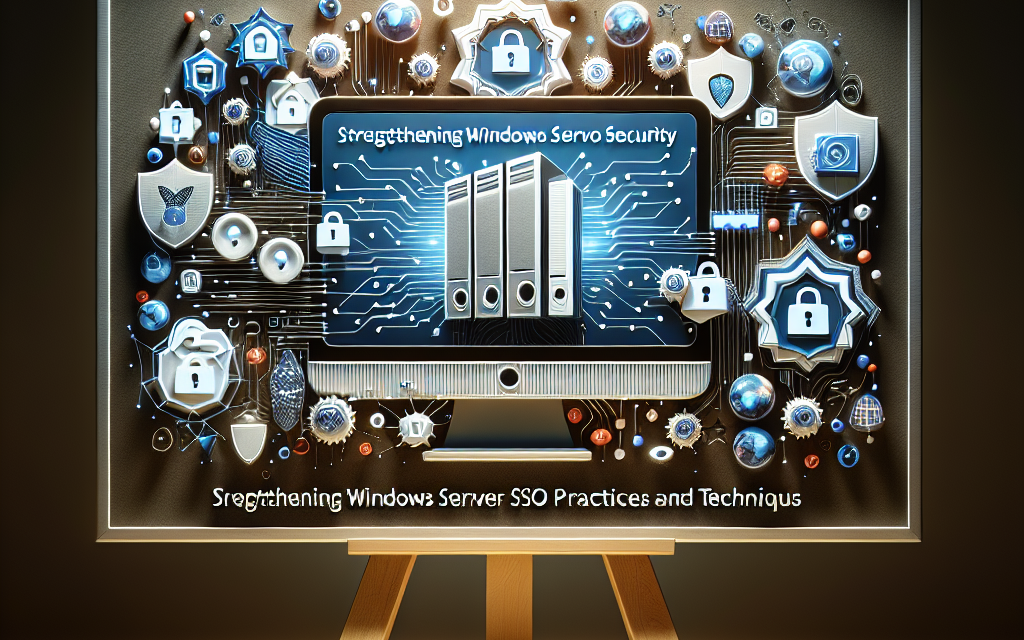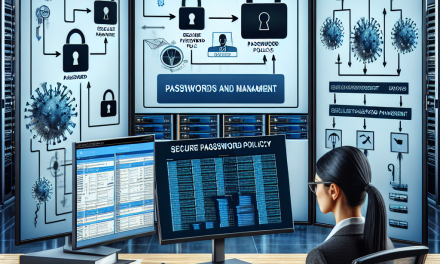In today’s digital landscape, the significance of a secure Single Sign-On (SSO) system cannot be overstated, particularly in a Windows Server environment. As organizations increasingly adopt SSO to simplify user access while improving operational efficiency, it’s crucial to ensure that this convenience does not compromise security. In this article, we’ll explore best practices and techniques to strengthen Windows Server SSO security, ensuring that your organization remains resilient against potential threats.
Understanding SSO and Its Benefits
Single Sign-On (SSO) is an authentication process that allows users to access multiple applications with one set of credentials, promoting user convenience and administrative efficiency. While the benefits of SSO are considerable, including reduced password fatigue, improved user experience, and centralized user management, it also introduces unique security challenges. If compromised, an attacker can gain access to multiple resources with a single credential.
Best Practices for SSO Security
1. Implement Strong Authentication Mechanisms
Using multi-factor authentication (MFA) is one of the most effective ways to bolster SSO security. MFA requires users to provide two or more verification factors to gain access, which significantly reduces the risk of unauthorized access.
Recommendation: Require additional authentication methods, such as a code sent to a mobile device or biometric verification, particularly for accessing sensitive applications.
2. Regularly Update and Patch Systems
Keeping your Windows Server and SSO applications up to date with the latest security patches is vital. Cybercriminals often exploit known vulnerabilities to compromise systems.
Recommendation: Implement a stringent update policy to ensure that all software, including the underlying operating system, third-party applications, and SSO configurations, are regularly updated.
3. Utilize Role-Based Access Control (RBAC)
By implementing Role-Based Access Control, you can ensure that users only have access to the resources necessary for their roles. This principle of least privilege minimizes potential security risks that arise from unnecessary access.
Recommendation: Regularly review user roles and access privileges and adjust as required to reflect changes in job responsibilities.
4. Secure Communication Channels
When transmitting credentials or sensitive information, always ensure that secure protocols like HTTPS, TLS, or secure VPN connections are used. This step is essential to prevent interception by malicious actors.
Recommendation: Implement SSL/TLS for all SSO-related communications and regularly check for vulnerabilities in your certificates.
5. Monitor and Audit Access Logs
Continuous monitoring and auditing of access logs can provide valuable insights into user behavior and help detect potential security breaches early.
Recommendation: Regularly review access logs for unusual activities and set up alerts for potential indicators of compromise.
6. Implement SSO Delegated Authentication
When using delegated authentication, consider limiting its use to highly trusted services. While allowing third-party applications to authenticate using your infrastructure can enhance usability, it can also introduce vulnerabilities if not properly secured.
Recommendation: Always validate external requests and utilize scopes and claims to restrict permissions for third-party applications.
7. Conduct Regular Security Audits and Penetration Testing
Vulnerabilities can exist in any system, and proactive security assessments can help identify and mitigate risks before they can be exploited.
Recommendation: Schedule regular security audits and penetration tests to evaluate and enhance the security posture of your SSO implementation.
8. Enforce Strong Password Policies
Strong, complex passwords are a first line of defense against unauthorized access. Ensure that your organization enforces policies for creating robust passwords.
Recommendation: Require passwords to be a minimum length, contain a mix of characters, and mandate regular password changes.
9. Educate and Train Users
Human error remains one of the most significant threats to cybersecurity. Regular training can empower users to recognize security risks and respond appropriately.
Recommendation: Conduct mandatory cybersecurity training sessions that cover the importance of password security, recognizing phishing attempts, and adhering to company policies.
10. Leverage Security Information and Event Management (SIEM) Tools
Using SIEM tools can enhance the ability to detect, analyze, and respond to security incidents. These tools aggregate logging data from multiple sources, enabling better visibility and insight into potential threats.
Recommendation: Invest in SIEM solutions to enhance real-time threat detection capabilities and improve overall security incident response.
Conclusion
As organizations continue to embrace the conveniences of Single Sign-On solutions in Windows Server environments, the emphasis on security cannot be overlooked. By implementing these best practices and techniques, you will significantly enhance the security posture of your SSO system while fostering a safe and efficient working environment.
Invest in a proactive security strategy today and safeguard your organization’s data, reputation, and operational integrity in the digital age. Always remember that a robust SSO system is not just about ease of access—it’s about securing your access.





